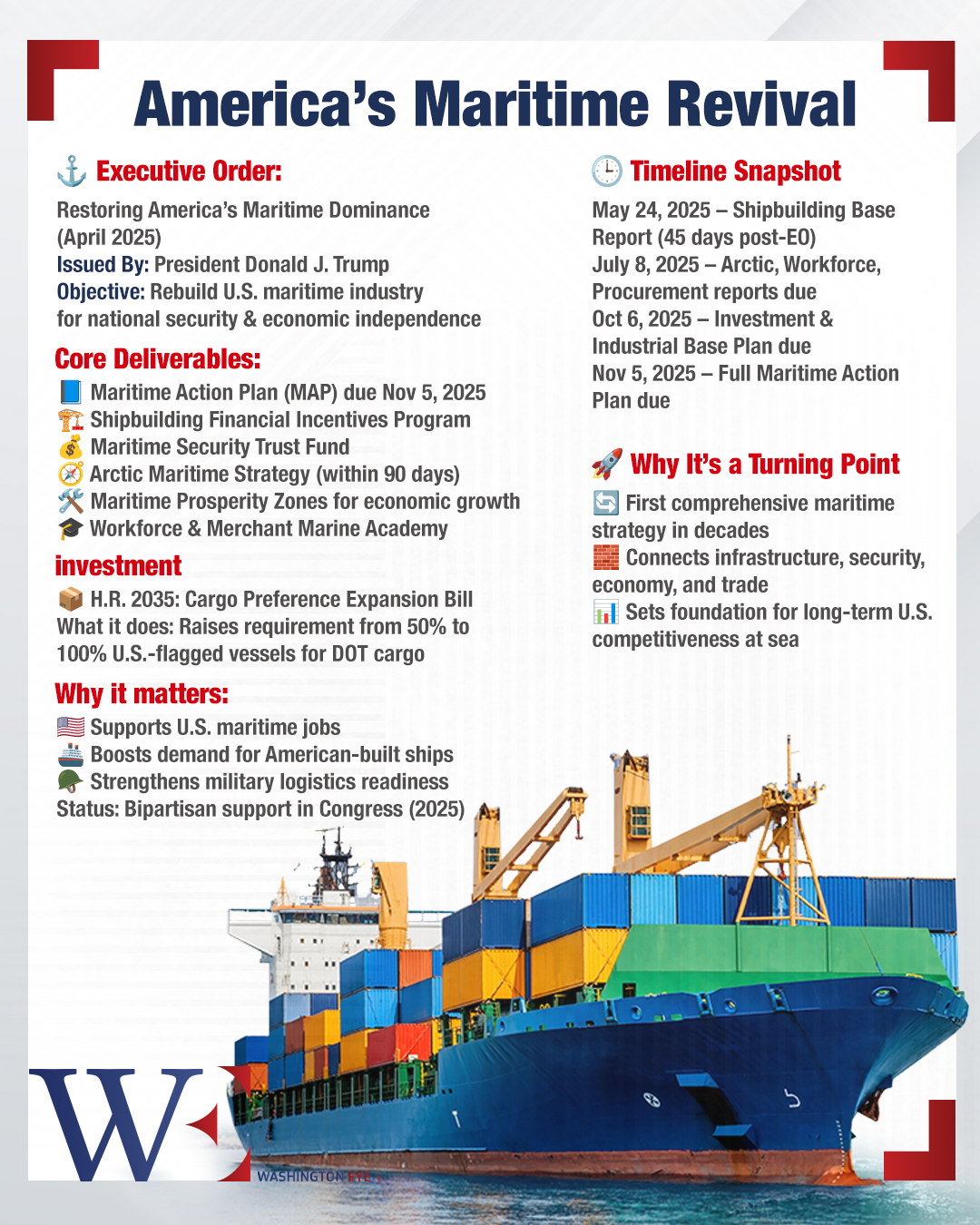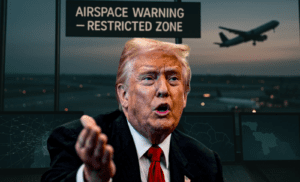by: The Washington Eye
It’s been a long time coming, but America is finally returning to the sea.
With the stroke of a pen, President Trump’s Executive Order titled “Restoring America’s Maritime Dominance” has reignited a sector too long neglected, yet fundamental to our economic independence and national security. At the same time, Congress is rallying behind H.R. 2035—a bipartisan bill to ensure government cargo is carried on U.S.-flagged and crewed vessels. Together, these initiatives aren’t just symbolic—they mark the beginning of a long-overdue maritime renaissance.
And it couldn’t have come at a more critical moment.
Why It Matters
America’s commercial fleet has steadily withered over the past three decades. At its height, we could project economic strength and military readiness with an armada of U.S.-built, U.S.-crewed vessels. Today, foreign-built cranes, foreign-flagged ships, and port equipment tied to geopolitical rivals dominate our coastal infrastructure.
We’ve outsourced not just labor—but leverage.
The Executive Order changes that. It’s more than a policy document. It’s a call to arms—a Maritime Action Plan designed to coordinate every arm of government around a simple but powerful premise: America must control its own destiny at sea.
What the Plan Does Right
First, it aligns national security with industrial policy—bringing shipbuilding, port upgrades, workforce development, and maritime strategy under one umbrella.
Second, it lays the financial groundwork: a Maritime Security Trust Fund and Shipbuilding Financial Incentives Program will give shipyards and investors the long-term certainty they’ve long needed.
Third, it embraces economic vision. From Arctic strategies to new “Maritime Prosperity Zones,” the policy imagines America’s coastline not just as borderlands—but as engines of growth, innovation, and resilience.
And the timeline is refreshingly urgent. Reports on workforce, procurement reform, and industrial investment are due by this fall. The full Maritime Action Plan will arrive by November. For once, government is moving at speed.
Bipartisan Backing That Deserves Applause
Equally impressive is what’s happening in Congress. The bipartisan H.R. 2035 would expand cargo preference from 50% to 100% for U.S. Department of Transportation shipments. It’s a straightforward idea: if American taxpayers are funding the cargo, American mariners should be moving it.
The bill means more ships flying the U.S. flag, more maritime jobs, and more demand for domestic vessels. It will strengthen the commercial fleet that undergirds our military logistics and our commercial supply chains.
We’ve done it before. During World War II, American shipyards built more than 5,000 merchant vessels. Today, we need only a fraction of that to make a difference—and the tools are finally in place.
Let’s Seize the Moment
Critics will say it’s too ambitious, too expensive, too late. But we know the cost of inaction: supply chain vulnerabilities, dependence on foreign powers, and missed economic opportunity for American workers and businesses.
This is a chance to build—not just ships, but strategy.
It’s a chance to connect coastal communities to new investment, modernize our ports with American-made equipment, and reestablish maritime education and pride in an industry that once defined the nation.
And it’s a signal to our allies and adversaries alike: America still understands that seapower is not a relic of history. It is the foundation of the future.
Final Thought
In a fractured world, where supply lines are increasingly weaponized and the global maritime order is shifting, reclaiming control of our fleet is more than patriotic—it’s pragmatic.
The ocean made America a trading power. The merchant marine helped make it a superpower. Reviving our maritime industry today is not nostalgia. It’s necessity.
The tide is turning. Let’s not miss it.
















